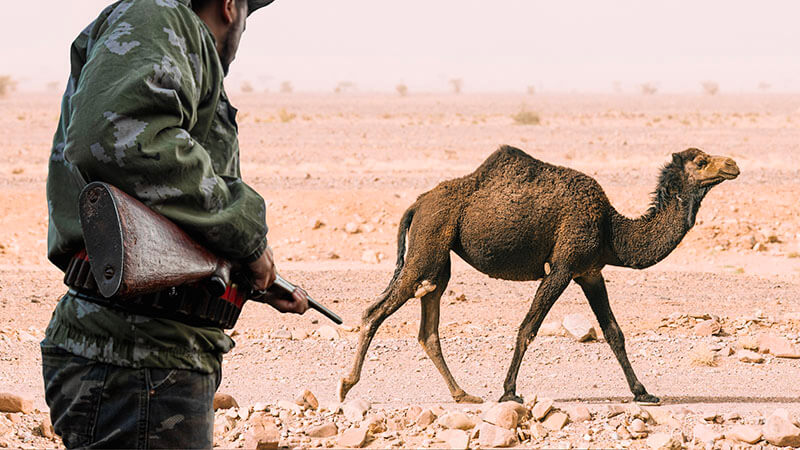
AE 1027
10 Deadliest Australian Animals | Part 2

In today's episode...
And here we are on Part 2 of Australia’s deadliest animals — or so the video ’10 Most Dangerous Animals In Australia’ says so.
Mmm, we’re getting to the ones to the top of their list. I may have said nay to some of them but let’s see here.
#6 The one with one red stripe.
#5 The one who can camouflage.
#4 The one with pretty blue rings.
#3 The one with terrifying teeth.
#2 The one without legs.
#1 The one with wispy tentacles.
What scary Australian animal have you encountered? Do tell me in the comment section!
Improve your listening skills today – listen, play, & pause this episode – and start speaking like a native English speaker!

Watch & listen to the convo!
Listen to today's episode!
This is the FREE podcast player. You can fast-forward and rewind easily as well as slow down or speed up the audio to suit your level.
If you’d like to use the Premium Podcast Player as well as get the downloadable transcripts, audio files, and videos for episodes, you can get instant access by joining the Premium Podcast membership here.
Listen to today's episode!
Use the Premium Podcast Player below to listen and read at the same time.
You can fast-forward and rewind easily as well as slow down or speed up the audio to suit your level.
Transcript of AE 1027 - 10 Deadliest Australian Animals | Part 2
G'day, you mob. This is part two of this Top 10 Most Dangerous Animals video, it was running a little long, so we split it into two. I'm going to leave a little card up here for you to check out part one but do it later. Okay. Anyway, let's get into it.
Number six, the redback spider. If you're not a fan of spiders, you might have to be extra careful during your visit to Australia. Just like anything in nature that has red on it, the red bark spider screams danger from afar, although it can be a bit hard to see since this animal is only one centimetre long.
But what this spider doesn't have in size, it compensates it through its highly dangerous venom. And where exactly in Australia is this spider? Well, you can find it throughout the country. A single bite can kill...
I used to catch these as a kid. So, my grandparents had a farm up in Bendigo, and I remember they built a shed, a metal shed and underneath all of the sort of support railings inside the shed were just hundreds, if not thousands, of redback spiders. So, you're going to find these everywhere. They're under rocks, they live in trees, they live in sheds.
They're just everywhere, at least down here in Victoria. But to be honest, they have such small fangs that it would be so hard for you to get them to bite you, you know, you would probably have to put it on the back of your hand where the skin's thin and really push the head down into your skin to get it to bite you. And again, if you get bitten by one of these, go to the hospital.
There was a news story a while back, I think I showed you guys or talked about it previously where a guy was bitten on the penis twice by probably the same redback spider in a portaloo whilst working on a worksite in Australia. He was a tradie and he had to keep going to the hospital to get antivenom. So, yeah, I don't even know if anyone's ever actually died from a redback bite. Let's have a look.
Red back bite death Australia. Okay, so there have been no deaths in Australia from confirmed spider bites since 1979. Oh, here we go. Sydney man dies after redback spider bite, although not clear bite to blame. Okay, so maybe that doesn't count. So, about 2,000 people are bitten by redback spiders every single year in Australia, but the last death seems to have been in 2016, and even then, they don't know that it was because of the spider bite.
But yeah, we've had antivenom for 60 years, so it's very unlikely that you are going to die from a red back spider bite in Australia. And if you do get bitten, you're going to have plenty of time to go to the hospital and get some antivenom.
But there is antivenom that you can use, which was created back in 1956. There have not been any deaths reported since then, but now I...
There you go, haven't been any deaths since 1956, at least.
...Wonder what people did before the cure was invented, you know, aside from pass on. Being such a small spider, I'm sure a lot of people might wonder how they can tell whether they've been bitten or not. Well, you just have to look for symptoms to know. A redback spider bite can cause latrodectism, which is an illness that produces sweating, vomiting, rigid muscles and lots of pain.
If you get any of these reactions you might want to get yourself checked. The spider is small, but the pain it will cause you is not, so you will know when one of them has bitten you.
The interesting thing about these spiders, too, is they tend to eat the males after they've mated it, right, that's a very serious cause of death for male redback spiders. And you will see loads of photos and videos floating around the internet where these things are eating things like snakes that they've caught in their webs. So, they're no joke. Good little predators.
Number five, the Stonefish. All right, so we're clear that white sharks are not out to get you...
See, some of these animals that they include here just don't seem to make a lot of sense. I guess it's, well, dangerous animals, I guess. But still, how are you measuring this? Like stonefish? Really? How often are they going to encounter human beings?
These are fish that live in coral reefs around Australia, and they're known for camouflaging and trying to appear like rocks on the bottom of the sea floor, and they have these spines along their dorsal fin that have venom in them that elicit insane pain if you step on one of these fish. So, they're definitely highly venomous, I don't know if they've ever killed anyone. Let's have a look.
Since the arrival of Europeans on Australian shores, there have been no recorded deaths from stonefish stings in this country. So, I don't know how you claim these as dangerous unless it is just that they pose a threat of being stepped on when you go scuba diving, although you probably shouldn't be walking when you're scuba diving.
...But I'm sorry to inform you that there is another animal in the water that might make you want to be a bit more cautious once you go diving or on a snorkelling trip throughout the coral reef. I'm talking, of course, about the stonefish. This animal is dangerous not only because it's venomous, but also because it's very hard to spot. The stone fish is usually motionless, which explains the reason why people called it that way.
There's a guy free handling one. I mean, how bad are they? He's just picked this one up out of the water.
The fish lives between rocks and coral, and you can find it in different...
So, you can see on the top there, those are the spines and they're like really long, hollow fangs. And when pressure is put on top of them, I think it would squash the venom gland and the venom would shoot into your body.
So yeah, I can imagine stepping on these would be horrible, but it's obviously a defence against other animals. Any other animal that would come from above while this thing is sitting on the ocean floor waiting for prey and try and attack it, it's going to get a mouth full of spines and venom.
...Environments of shallow waters, such as mudflats and estuaries. It's camouflage is an inconvenience for...
It is pretty insane how camouflaged they are. Like, check this one out here. You can see it's got all these different blotches on it, and it just totally blends in with the coral reef.
...And then a single step on them can send you straight to the hospital. A stone fish sting...
There you go. So, you can see the spine has gone straight through a thong, and it is meant to be apparently one of the most painful things that can ever sting you. So, the pain apparently is paralysing and lasts for ages and feels like you've put your foot into boiling water.
...Can cause unbearable pain and even death if you don't treat it in a good manner.
See the venom just squirting out. But the good thing is that you can treat a stonefish attack as soon as you notice it. All you need to do is apply hot water to the affected area and wait for the venom to lose its effect. So, there you go, he's saying, if you ever step on one of these and get envenomated.
I think that's the right word, right? And you feel the pain you need to put your foot in as hot a water as you can handle. A water? As hot water as you can handle. And the venom proteins will be denatured, they will come apart and stop affecting you the same way, right. So yeah, I guess that's it. I'm wondering if he's going to talk about jellyfish at some point and needing to pee on people's legs if you get stung.
Some people also claim that vinegar helps in this situation. Antivenom is available, but people only recur to it when the case is too extreme to handle.
Yeah.
Number four, the blue ringed octopus. A returning animal from many of our lists, here's another animal that also lives underwater.
See, these are all these animals that haven't killed anyone or killed someone, you know, years and years and years ago. And- But they're just not that dangerous. The blue ringed octopus, it is highly venomous. I think it's the only venomous octopus that we know of, and they're just really hard to find.
They live on the coast down here, and if you were trying to find one of these, it would just be, you know, unless you were a biologist and knew exactly where to look and how to attract them. You're never going to come into contact with them, in fact I know one person who has been bitten by one of these and he was a marine biologist, and this was back in probably the 70s or 80s, and he survived.
So, let's have a look. When was the last person to die from a blue ringed octopus death? Yeah, and I tell you what, there are some idiots out there, man. I've seen some of these things on TikTok, with people doing videos of them handling blue ringed octopus because they think they're these pretty little octopi, octopuses that they find at the beach. And your just like, uh, what are you doing, dude?
You wouldn't pick up a snake. Why would you pick up the world's most, the world's only venomous octopus? Jesus. Like, ugh. Going to Bali and unknowingly holding one of the most dangerous animals, one of the most venomous animals, one of the most venomous animals.
Anyway, what are we looking for? Last death. All right. So, it looks like there have only ever been three deaths that are known from blue ring octopi. And it looks like the venom causes paralysis, so you will die from lack of oxygen. So, again, you've got loads of time, right.
If you get bitten by one of these, you can have CPR, someone just needs to obviously keep breathing for you or just call an ambulance, go to the hospital and you'll be sweet. Because even if they don't have antivenom, hopefully they can just chuck you on a respirator and wait till the venom flushes out.
I can't keep doing this forever.
What's that? Three deaths ever. Dangerous animals. One of the most dangerous Australian animals.
The blue ringed octopus. This one won't be as hard to spot as the stonefish. In fact, this one is very cool to watch as its skin is covered in little blue pattern...
They are very cool. They have these blue spots on them that they can make even brighter as a defensive warning against predators. But they're these tiny little octopi, and you're just never going to see them.
...Things that look like rings. But still, if you do see one, please stay away from them.
Yeah, if you see one, don't pick one up and do a TikTok.
These small animals are cool, but they're also venomous.
There you go, you just got to see the threats display. So, if we bring that back a little bit. Check it out when he comes and sort of expands himself and how bright the blue rings become.
...Please stay away from them. These small animals are cool, but they're also venomous. Once they sting you, your body will shut down and become paralysed to the point that you will stop breathing.
Yeah.
And unfortunately, they're...
You know what they're preferred prey is? Crabs. Little crabs.
There's no anti-venom for cases of blue ringed octopus attacks. However, they say you can treat their bites by helping the victim stay calm and breathe until the octopus's toxin is removed from the body by applying pressure on the wound.
There you go. So, just keep breathing.
But don't worry too much. This animal is actually quite shy, and like most wild animals out there, the blue ringed octopus will only attack when it feels threatened.
Well, and apparently not even if it gets picked up by idiots at times.
There have only been three blue ringed octopus related deaths reported to Australia, so the chances of you being number four are actually quite low. Just enjoy the Australian waters and stay away from animals that don't want to be near you. Number three, saltwater crocodiles, and...
This is sort of in the realm of sharks. It's about the same number of deaths, I think one or two a year max.
...And this is where I'm going to start getting a big controversial for some of you because the animal I ranked as the third most dangerous in Australia is perhaps the most dangerous for a lot of you.
The most dangerous. How are you defining this? Sorry, to be that guy, but it's like, how do you define danger if it's not based on the actual number of deaths that are happening to humans by a certain animal? Because if you'd done this video correctly, it wouldn't get the clicks that it got, nor the view rate.
Because it would be about horses, dogs, kangaroos, cattle, all sorts of these banal animals that you think are fine, cute and cuddly, but are the actual animals that have the most number of deaths per year associated with them.
However, that's only because it's big, but not as threatening as the other two I'm going to show you. The saltwater crocodile, just like the name implies, are expected to be found in bodies of saltwater, meaning the ocean. However, they are more popular in estuaries and sometimes some freshwater spots as well.
Sometimes? These guys are found in saltwater, brackish water and freshwater, pretty much anywhere in the north part of Australia. If the water that you see in front of you is connected to the ocean do not swim in it. If there are signs saying that there are crocodiles there, do not swim in it. Assume there are crocodiles in the water if you are in far North Australia, okay, because better safe than sorry.
And I'll show you a video on screen here. This video I saw recently where they are at a camping ground, obviously, and one of the guys has the head of a buffalo and they're just showing you how sneaky crocodiles are. They throw the buffalo head in the water and instantly a three or four metre croc just comes surging out of the murky depths of this water that is right near a camping ground, and it had been waiting there the whole time.
So, they are sneaky. They are dangerous in that if you do something dumb, like go swimming where they are, then you are very likely to die if they attack you.
It can be quite amusing to see one in the wild, except when you're in Darwin, Australia, which is a place full of signs that warn you against these massive reptiles.
Another story for you I had, these guys are very smart, and they get very good at recognising patterns. So, if animals behave the same way repeatedly, they get used to, oh, this animal comes to the water every day at this time, I'm just going to wait here and then, boom, I'm going to nail him next time he comes.
When I was doing some turtle research up in far north Queensland, I met someone who had been doing some work on one of these islands in the Great Barrier Reef, and there were crocodiles around there. Every night they would have to go out and count turtles whilst walking around this island and they would see crocodiles and one big one in particular, just follow them as they walked around the island.
And they had to change the times that they were doing these surveys. They had to carry guns because this crocodile was just waiting for any opportunity where a person walked too close to the water to take them out.
These big animals are very aggressive, and they eat animals of all sizes, including humans.
They'll eat anything.
Now the thing is, there have been only 24 deadly attacks between the years of 1975 and 2009...
There you go, not even one a year.
...The chances of a deadly encounter are quite unlikely. However, I would encourage you to obey warning signs and stay away from places where you could potentially find one of these beasts.
Again, this is sort of simple stuff, right. Just be croc smart. If you're up in the north of Australia and you're near the water and you're fishing or you're camping, or you've got a dog that you're walking, you know, obviously just show some smarts. Stay away from the edge of the water. Don't throw fish that you've just caught or bait right near the water's edge, etc to attract them. You know, just be wary.
You do silly things in croc country; bad things can happen. If you be smart and be croc wise, you have no dramas. If you're a fisherman, don't leave your bloody fish scraps on the boat ramp.
Time for today's best pick.
Ooh, we get number one.
The picture I have for today is one of a scary looking snake that could easily give us all nightmares.
That does not look like an Australian snake.
Luckily, such a snake doesn't even exist, at least not in Australia. But there is a snake I do need to talk to you about...
The inland taipan.
Number two, Taipan snake.
Tie-pon? It's a Taipan.
A list of dangerous animals wouldn't be complete without this snake. You saw the tiger snake...
Again, this is just associated with that study that was done in the 70s about their venom. So, there are, I think there are three species of taipan snakes in Australia. There's the inland taipan snake and the coastal taipan and snake, and there was a third one that was recently finally discovered in the wild. I think along, I think it was the East Coast.
Anyway, these guys are so uncommon in terms of you coming into contact with them, and again, they're going to run off, they're not going to come after you. But they do have highly toxic venom, and it's because when they bite mice, which is their prey, they want the mouse to die as soon as possible.
And so, they just overdo it in terms of toxicity and how much venom they put in there. And so, you'll hear this stat all the time of, you know, taipans have enough venom to kill 200 grown men.
...brown snake and now is the second most dangerous animal. I give you the next one, the taipan snake. But why is this snake here if, after all, the brown snake is the one that causes the most deaths.
Because it could kill 200 men with a single bite.
Well, simply because the taipan snake is the most venomous in the world. However, this one lives in the desert, so it is a bit more unlikely that...
Okay, so he's talking about the inland taipan snake.
...Human will have a deadly encounter with one.
Oh, it's very unlikely that humans will even find one.
There have only been a few cases of people that were bitten by them. And guess what? They all survived.
There you go.
But in case you're wondering just how dangerous their venom is, well, it can cause your skeletal muscle to break down. It could also form a lot of blood clots throughout your system and can also damage your kidneys.
But it won't kill you, because no one's ever died of it.
So, don't go out there trying to test the effects of their venom, just respect their space. After all, they don't want to be near you as much as you don't want to be near them.
Reason for entering Australia, mate? I'm just here to try and test the venom of a taipan- Inland taipan snake. Right. Get back on the plane.
Number one, the box jellyfish. Well, this animal hasn't killed humans that often it is still the most toxic animal on Earth.
That looks like Irukandji, that doesn't look like a box jellyfish. Maybe it is. Maybe it is. But so, box jellyfish are very, very, very toxic. Jellyfish again found in the northern waters of Australia; I think during summertime. So, again, if you're in the north of Australia, just don't go in the water, just don't go in the water at all.
But yeah, box jellyfish are horrible because they grow pretty large, they have tentacles that end up growing incredibly long, and they just end up injecting a (beep) of venom into your body and causing a heart attack, I believe. I'm not sure if this is Irukandji. I think- Irukandji. How do we spell that? So, this is what I believe is actually the most venomous jellyfish in Australia, and it is tiny, absolutely tiny.
And so, they're, yeah, you can see how tiny they are. But yeah, they are just covered in these little organs that are full of pneumatosis, which are the cells that shoot those venomous harpoons into their prey. And this professor from James Cook Uni, Professor Jamie Seymour, has actually been unlucky enough to be stung by an Irukandji, and he studies venomous animals, including these jellyfish.
And I remember seeing this video where he spends two days just in excruciating pain in the hospital after a tiny, tiny sting from Irukandji. So, I think he fears them a great deal more than he does box jellyfish. Fish are obviously terrified of it.
...Those things can lead you to your death.
Man, it's even got a little starfish on it. That's cool.
But a lot of first responders have been trained in beaches around Queensland to help out anyone who gets affected by one of these lethal creatures. I really don't know what you might have heard, but pee is not as effective as some people claim.
Yeah, okay, so don't urinate on one another in order to stop the stinging.
Well, there's really only one thing you can do. What? What is it? You're going to have to pee on it.
However, vinegar and other practises can help you survive the attack. So, just be careful when you swim in those waters...
Yeah. Use vinegar. I've heard vinegar just kills all of the cells and the stingers that may be stuck on your skin and prevent them from firing after the fact, but they're not actually going to get rid of the venom that's already been put into your system. So, there you go, guys. 10 Most Dangerous Animals in Australia again, it's somewhat garbage.
If you actually look up the most deadly animals in Australia, deadly as in actually caused deaths as opposed to their potential to kill someone. You'll find that horses, cows and animal transport kill 77 every whatever that is, 19 years. So, what's that? Three and a half a year? Other mammals, 60. Hornets, wasps and bees. Sharks, okay, you got 26. Well, sharks and other marine animals, 26 from 19 years, so a bit over one a year.
Snakes and lizards, 23. Dogs, 22. Crocodiles, 17. I guess a few of these made it to the list, right? But again, it's like one or two a year at best. So, if you really, really want to put your fear into proportion, you should probably be worried about smoking cigarettes, drinking alcohol, eating burgers, heart disease, everything like that.
All right. So, that was the end of part two, guys, of this series on Australia's top 10 most dangerous animals. Be sure to click here to check out part one. See you next time. Bye!

Listen & Read with the Premium Podcast Player
Get more out of every episode!

Premium Podcast members get access to...
- All 900+ podcast episodes including member-only episodes
- Member-only episode video lessons
- Downloadable transcript PDFs & audio files for every episode

Recent Episodes:


AE 1299 – Pete’s 2c: Do You Ring, Call, or Dial Someone on the Phone in Australia?

AE 1298 – Learn English with a Short Story: Day at the Beach

AE 1297 – The Goss: How ‘Dropping In’ Culture Has Changed in Australia

AE 1296 – The Goss: Gorilla Glasses & Dad’s Crazy Zoo Stories – MEMBERS ONLY

AE 1295 – The Goss: Australia’s Most & Least Ethical Jobs

AE 1294 – The Goss: Australia Just Had the Best Aurora in 500 Years!

AE 1293 – The Goss: Should Aussie Schools Ban Homework?

AE 1292 – How Aussie Do Asian Australians Feel? r_AskAnAustralian

Share

Join my 5-Day FREE English Course!
Complete this 5-day course and learn how to study effectively with podcasts in order to level up your English quickly whilst having fun!

Join my 5-Day FREE English Course!
Complete this 5-day course and learn how to study effectively with podcasts in order to level up your English quickly whilst having fun!


Want to improve a specific area of your English quickly and enjoyably?
Check out my series of Aussie English Courses.
English pronunciation, use of phrasal verbs, spoken English, and listening skills!

Have you got the Aussie English app?
Listen to all your favourite episodes of the Aussie English Podcast on the official AE app.
Download it for FREE below!



Want to improve a specific area of your English quickly and enjoyably?
Check out my series of Aussie English Courses.
English pronunciation, use of phrasal verbs, spoken English, and listening skills!
Leave a comment below & practice your English!






Responses